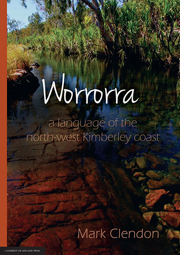Book contents
- Frontmatter
- Dedication
- Contents
- List of tables
- List of figures
- Abbreviations
- Acknowledgements
- Chapter One introduction
- Chapter Two segmental phonology
- Chapter Three morphophonology
- Chapter Four nouns and noun classes
- Chapter Five indicative mood and basic verbal morphology
- Chapter Six adjectives and inalienable nouns
- Chapter Seven pronouns, demonstratives, anaphors, deictics
- Chapter Eight optative, counterfactual and exercitive moods
- Chapter Nine number
- Chapter Ten adverbs and postpositional phrases
- Chapter Eleven complex predicates
- Chapter Twelve experiencer constructions
- Chapter Thirteen objects and possession
- Chapter Fourteen complement clauses
- Chapter Fifteen subjunctive verbs
- Chapter Sixteen middle voice
- Chapter Seventeen discourse cohesion
- Chapter Eighteen kinship terms
- Appendices
- References
Chapter Four - nouns and noun classes
Published online by Cambridge University Press: 05 October 2014
- Frontmatter
- Dedication
- Contents
- List of tables
- List of figures
- Abbreviations
- Acknowledgements
- Chapter One introduction
- Chapter Two segmental phonology
- Chapter Three morphophonology
- Chapter Four nouns and noun classes
- Chapter Five indicative mood and basic verbal morphology
- Chapter Six adjectives and inalienable nouns
- Chapter Seven pronouns, demonstratives, anaphors, deictics
- Chapter Eight optative, counterfactual and exercitive moods
- Chapter Nine number
- Chapter Ten adverbs and postpositional phrases
- Chapter Eleven complex predicates
- Chapter Twelve experiencer constructions
- Chapter Thirteen objects and possession
- Chapter Fourteen complement clauses
- Chapter Fifteen subjunctive verbs
- Chapter Sixteen middle voice
- Chapter Seventeen discourse cohesion
- Chapter Eighteen kinship terms
- Appendices
- References
Summary
This chapter is concerned with nouns as word-forms that refer to types of things, while Chapter Six deals with nominal expressions as denoting instances of those types (cf Langacker 1991:51). Worrorra referring expressions may be described by reference to at least three independent parameters with formal consequences:
Classificatory: by way of a five-way gender partition
Lexical: by way of a four-way morpholexical division
Animacy: by way of a two-way split, pluralizable vs non-pluralizable
Classificatory
Worrorra nouns occur as members of one of five classes or genders. These are a masculine class, a feminine class, a celestial class, a terrestrial class, and a minor class of collective nouns containing probably about a dozen members. Although some genders may be neutralized in some situations (see especially Chapter Nine), genders and noun classes do not constitute separate categories in Worrorra, as they do in some languages such as Mayali (Evans 2003), so that the terms ‘gender’ and ‘noun class’ may be used here synonymously. The two non-human genders referred to here and in Clendon (1999) as celestial and terrestrial, are referred to by Love (1934) as the wuna and mana classes respectively. Love named these genders after the definite articles used with their members (wunu and mana in my experience) (see Chapter Seven). Gender-marking is exhaustive and unique; the gender of the head of a noun phrase controls agreement on adjectives, inalienable nouns, pronouns and verbs and is essentially invariable with respect to each noun. Gender in Worrorra is described in §4.1.
- Type
- Chapter
- Information
- WorrorraALanguage of the North-West Kimberley Coast, pp. 66 - 97Publisher: The University of Adelaide PressPrint publication year: 2014



